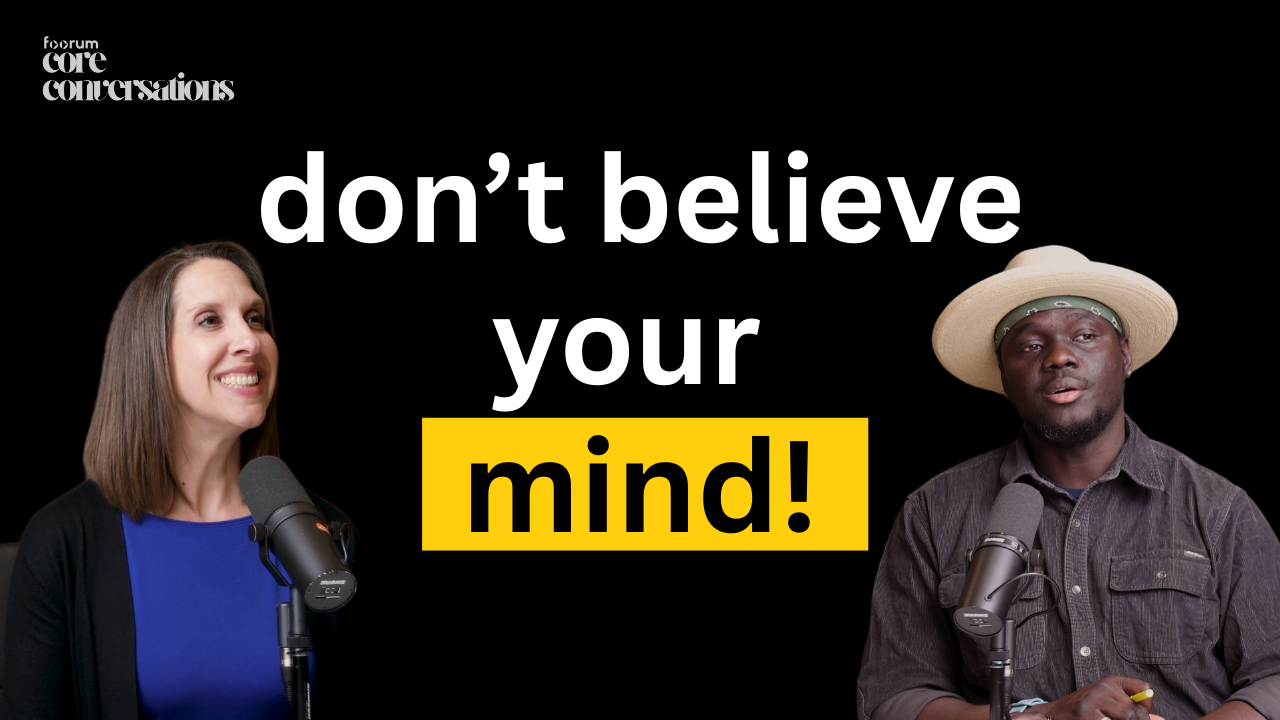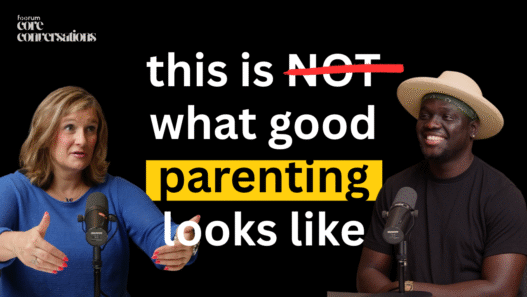There’s a lot going on in the world today. Kids and teens are often faced with enormous pressures and have unprecedented access to information 24/7.
As parents, all we want to do is to help our children grow, thrive, and stay safe.
One of the most important skills we can help our kids develop is how to have what might be viewed as “hard” conversations about potentially uncomfortable topics:
- Sex
- Drugs
- Politics and World Events
- Social Media
- Relationships
- Mental Health
- Death, Divorce, Illness
Starting these conversations early and maintaining open lines of communication creates a foundation of trust and builds this skill.
Opening the door to talk about these topics increases the chances that you can be that solid anchor in their storms and lets them know you’re there to listen, no matter what.
Learning to tolerate the inherent discomfort in these conversations builds character and the ability to be vulnerable – both essential to developing meaningful relationships.
As a mom and child psychologist, I’ve had these conversations and helped parents navigate these conversations.
Here’s my take on tackling difficult conversations with teens.
Manage your own emotions first.
Check in with yourself and understand your own anxiety and discomfort first.
Our brains have mirror neurons designed to “read the room” and sense the emotions around us.
Children will either catch your distress or your calm. If you’re uncomfortable and hesitant, then it creates discomfort for them too.
It’s possible to be uncomfortable, yet confident and matter-of-fact.
When discomfort arises, as it inevitably will, this is the time to pause and focus on the goal of the discussion not the discomfort.
Is it to create an opportunity for open communication? Is it to set boundaries explanation? Is it to provide information to ponder?
Keeping the “why” in mind helps manage emotions.
Create the right environment.
Don’t force eye contact. In fact, research suggests that boys often prefer having conversations side by side rather than directly.
Many great conversations occur in the context of activities, especially ones that are naturally rhythmic or regulating:
- Shooting baskets
- Cooking together
- Walking
- Art projects
- Board games or conversation cards
- Late-night tuck-ins
Driving in the car was one of my favorite ways to introduce ideas or check-in – no eye contact and a captive audience.
It’s one of the things I missed the most after my boys started driving.
Watch your tone, timing, and delivery
Ensure your teen has your attention – don’t interrupt or talk to them while engaged in a screen (either your teen or you!).
If a teen has broken a rule, like breaking curfew or coming home smelling of alcohol, ensure safety first and then wait until morning to address the problem.
You can be empathetic, stern, and matter-of-fact all at once. If you get sarcastic or have “the tone,” your teen will probably react with defensiveness.
Likewise, don’t set them up to lie by trying to force them to “fess up.” If you have the facts, lead with them.
Start early
You don’t want the first time you approach a potentially uncomfortable topic to be when there’s a problem.
At an early age, you can provide developmentally appropriate information. For example:
- For body safety: Model and talk about keeping bodies safe. Use appropriate terms for body parts, highlighting which are private and should remain private (no sharing, taking pics, etc).
Discuss consent early, using age-appropriate metaphors (there’s a great one about tea and consent you can google). - For substance use: Explain how the brain develops until age 25, with significant growth during the teenage years.
Normalize curiosity while highlighting how experimenting with drugs and alcohol can impact developing brain cells. - For social media/technology: Use articles or new stories to spark interest; watch documentaries.
Identify your family’s beliefs and values as the guide for making decisions.
Use Effective Communication Strategies
- Be brief: Parents (myself included) tend to overexplain, often in an effort to get kids to agree.
We think that if we simply keep explaining, the light bulb moment will occur. It rarely does. Keep it concise. - Get curious and listen: Introduce the topic and ask what they know or have heard, before adding information.
You might say, “I heard about X… what do you think about that?” Follow their lead to determine how much and what information to add. - Paraphrase what you hear: This models good communication, slows down the conversation, and helps avoid misunderstandings.
It also avoids too many questions, which most teens I know find annoying (even though you’re trying to get their perspective). - Be ready for multiple conversations: Read the room and know when to stop. Some teens appreciate having time to process different ideas—think of certain conversations as ways to “plant seeds.”
- Know when to pause: Save your breath if your teen isn’t in the mood to respond or is tuning you out.
Find a way to end the conversation on a positive note: “Let’s pick this up later after we’ve both had a chance to think some more.”
If your teen is no longer listening, it may also mean they’re not feeling heard. Try: “I see the gears turning in your head. I’d love to hear your thoughts.”
Ironically, well-timed silences can be a great way to elicit further conversation.
Choose Your Language Carefully
- Avoid labeling or derogatory language. Becoming overly negative or harsh leads to shutting down conversations rather than inviting discussion and thoughtful reflection.
When discussing issues, particularly political ones, refrain from demonizing people with labels. This creates additional vitriol and emotional reactions.
Instead, focus on describing concerns about the specific actions of an individual and potential impacts. - Label the behavior not the person. I’m disappointed in your choices vs. I’m disappointed in you.
- Be honest and provide accurate information: Cite your sources—this is a favorite phrase of my boys.
You don’t need a PowerPoint presentation, but sharing an article can be a great springboard for discussion. - Create a safe space for disagreement: Let your teen know it’s okay to have different opinions. Model respectful disagreement by acknowledging their perspective even when you don’t share it.
This teaches them that relationships can thrive even when people don’t see eye-to-eye on every issue.
Address tragedy and Difficult events head on.
Whether it’s a school shooting on the news, politics, or a divorce in your family, difficult events demand honest conversations.
With social media and 24-hour news, shielding your teen from the world is no longer an option.
Similarly, personal challenges like serious illness, death, or family restructuring can’t be hidden away.
The strategies outlined above work effectively for these situations as well:
- Check in naturally: “I heard people talking about the X… I wondered if you’d heard about it,” OR “I wanted to check in with you about how you’re feeling about the breakup.”
This approach opens the door without interrogating. - Listen before speaking: Your teen’s response will tell you how much they already know and how deeply they want to discuss the issue.
- Focus on facts, not fear: Provide truthful information appropriate to their age without dwelling on graphic details or worst-case scenarios.
- Encourage contribution: Teens often feel helpless in the face of world events or difficult transitions..
Discussing specific ways they can support affected communities or contribute to positive change provides both purpose and perspective. - Find ways to CONNECT: This single word encapsulates what teens need most when facing a troubling world.
When we teach inclusion, kindness, and empathy, we give them tools that transform anxiety into action.
Difficult moments can be catalysts for growth. Creating spaces where everyone feels valued builds resilience that extends far beyond any single difficult event.
To sum it up, follow your teen’s lead. Be available to talk, but don’t force conversations or overemphasize situations.
Sometimes the most powerful response is simply being present and attentive when they’re ready to talk.
Remember:
Conversations happen over time. Sometimes the best approach is to provide basic but brief information, allowing time for processing and follow-up questions.
Plant the seeds, and be ready to nurture the conversation as it grows.
























